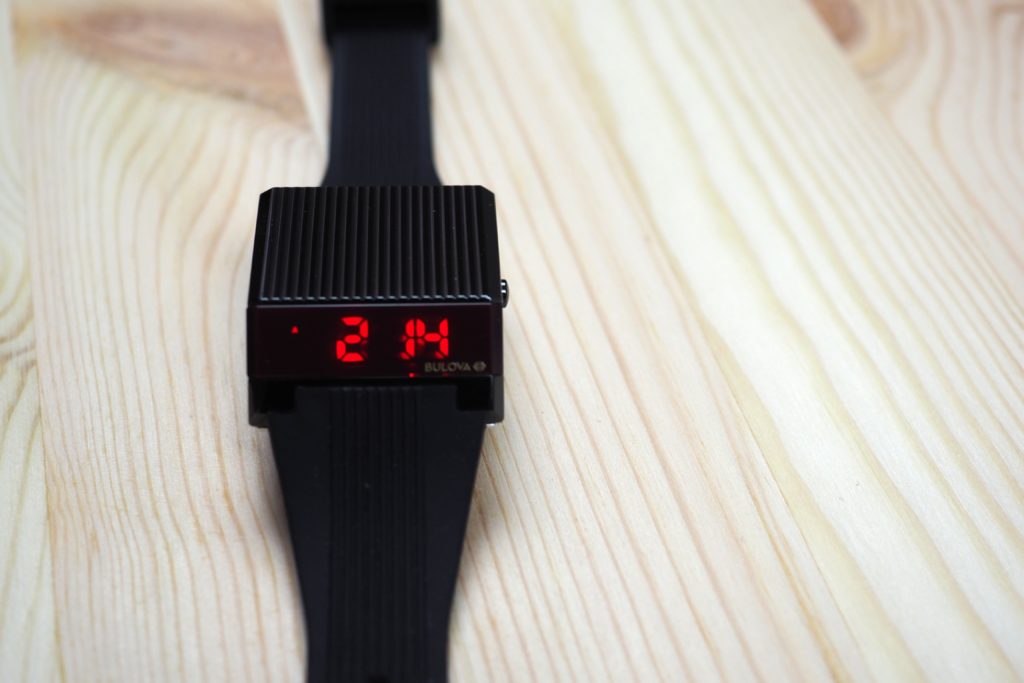
Let me begin by acknowledging the semi-truck-sized elephant in the room: I don’t usually talk about quartz watches, and I don’t usually write about digital watches, and today I’m writing about a quartz digital watch. This isn’t a change in overall policy. It’s the exception that proves why the rule exists in the first place.
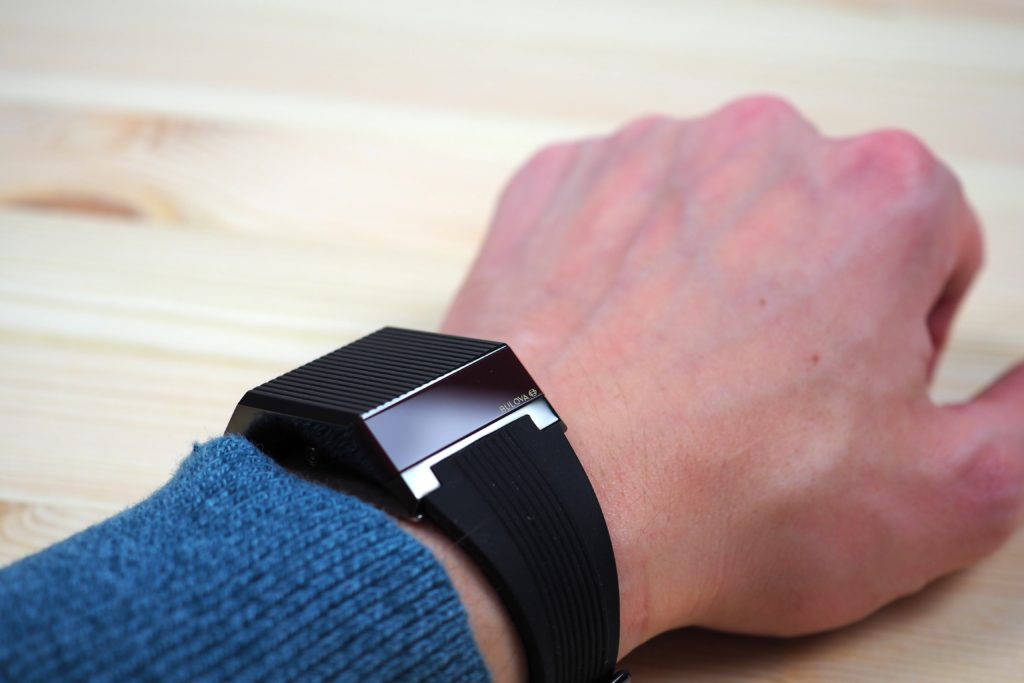
You see, the problem is that most “budget friendly” quartz and digital watches suffer from what could politely be called a severe quality deficit. But the Bulova Computron 1976 Re-Edition has a slick 1970s design that’s a near carbon-copy of a classic design. Not only is it dripping with retro charm, but it wears well on the wrist, and is easy to read in the dark.
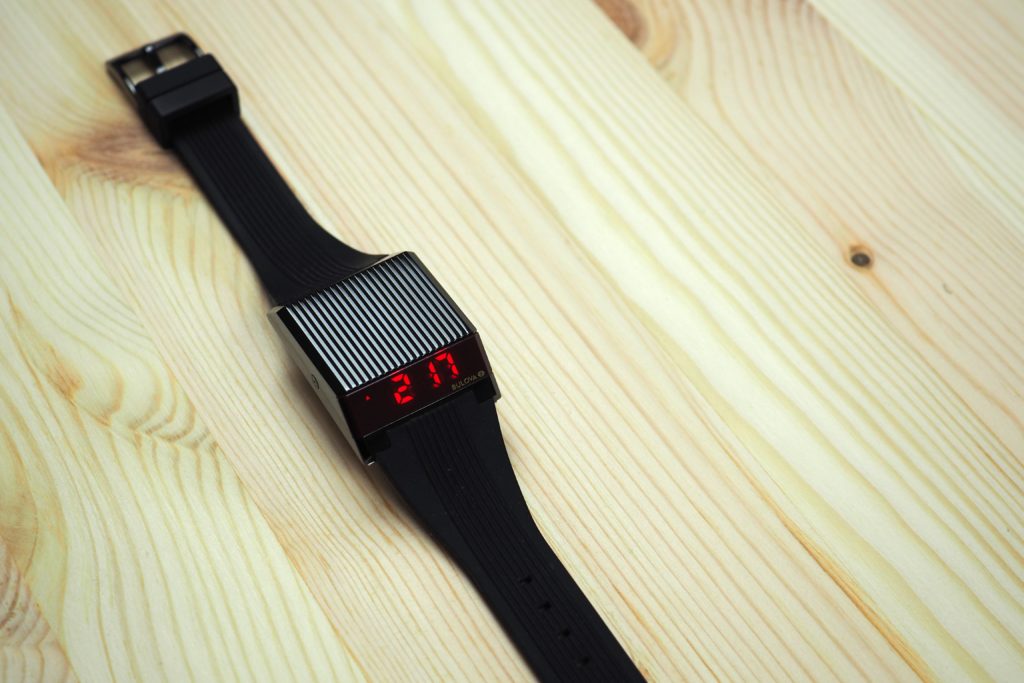
This re-release has been upgraded over the original, with a bright LED display that’s clearer and easier to read, both by day and at night. It comes in three different colors: black, gold, and silver. The black and red versions feature red LED lights, while the silver version utilizes cooler blue LEDs. Now, let’s look at some specifics.
Quartz Movement
I often begin by talking about a watch’s movement, because this is the most important aspect of many timepieces. In this case, however, I’m talking about a quartz movement, which has its benefits and its drawbacks. On the one hand, it’s absurdly accurate, and you won’t need to re-set the watch very often. On the other hand, the life is limited by the durability of the quartz crystals themselves, which are usually quite hardy. Once you’ve completely used up the lifespan of those crystals, the watch will stop keeping accurate time, even with a brand new battery.
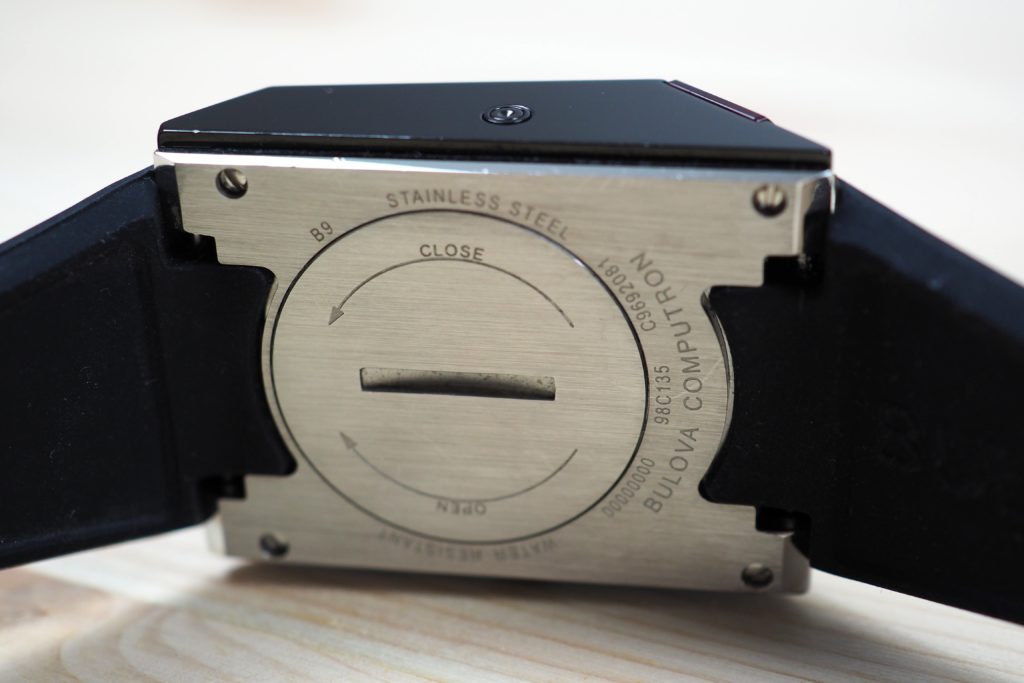
That said, the battery life itself is very good. You’re looking at about 12 months of battery life, while the crystals will typically last a very long time, so you should only have to change the Computron 1976’s battery once during its lifetime.
Retro Display
The display on this watch has a similar display to the original, with a series of four seven-segment numerals, along with an AM/PM indicator on the left, as well as a set of tiny second numerals on the right. The only difference between the re-release and the original in this regard is the bright LED display we already mentioned. This was a worthwhile improvement, and the colors retain the warm, retro tone of the original.
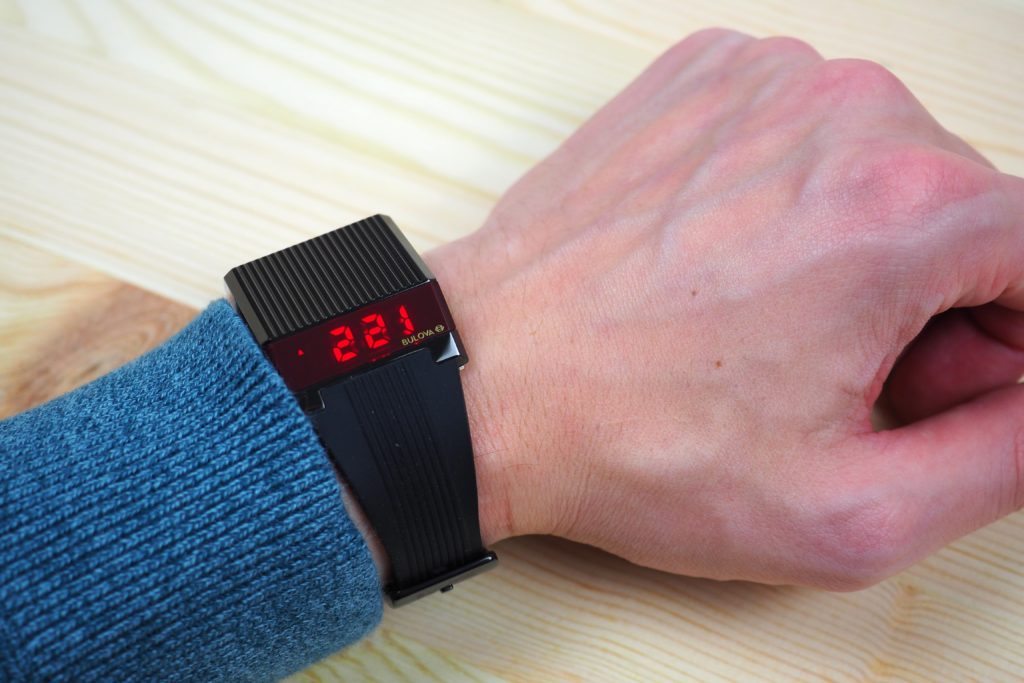
Pressing the side pusher allows you to cycle through various modes. In addition to the standard time display, you can also cycle through day and date, as well as set a second time zone. If you frequently commute from one time zone to another, this can be a significant benefit.
Crystal and Case
The case has a trapezoidal design that’s taller than it is wide, which means you’ll have to think about dimensions differently than you normally would. It’s 31mm wide, including the tiny pusher which is near flat along the case, and measures 40mm from top to bottom.
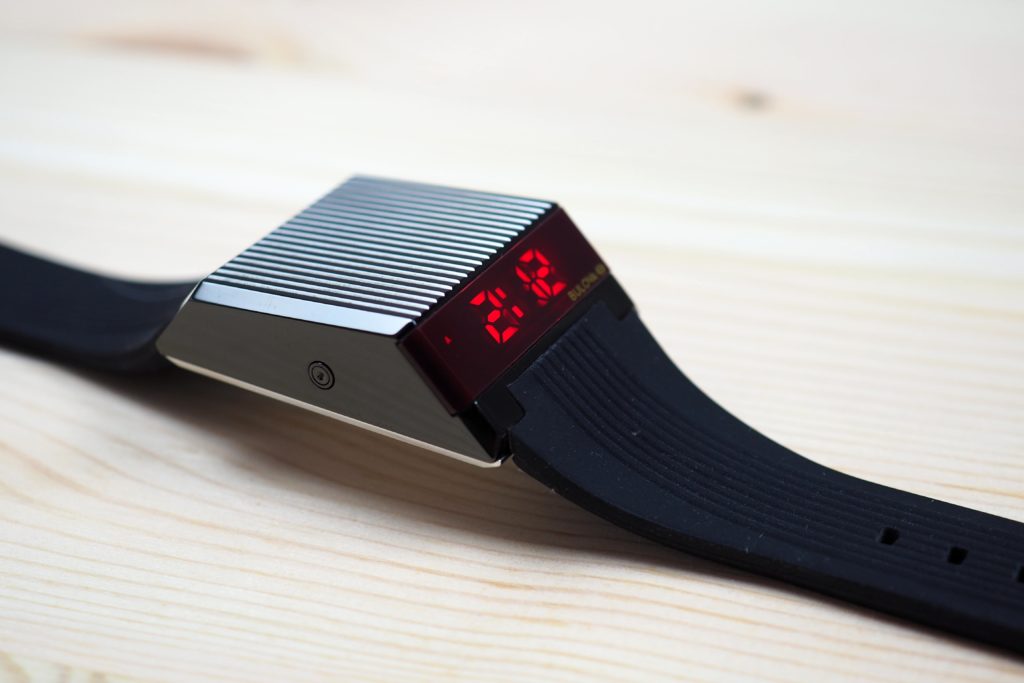
The height is only 13.8mm, so it’s what I’d typically consider a medium-sized watch. The crystal is a mineral crystal, which is fairly resistant to scratching but prone to glare. Then again, glare is less of a concern on a brightly-lit watch.
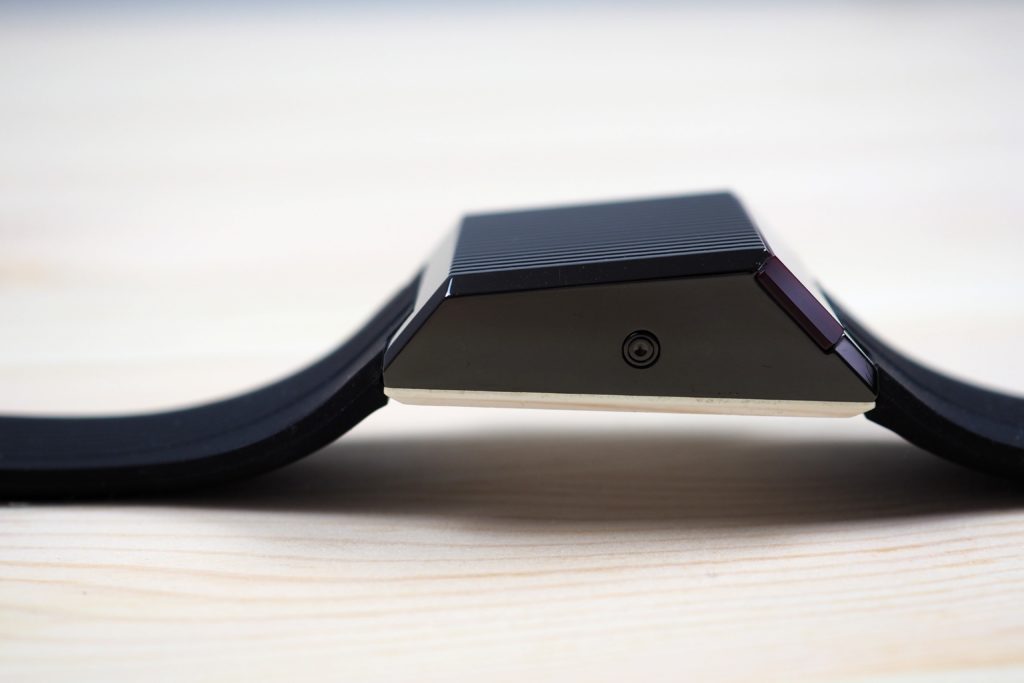
The case on the Computron 1976 Re-Release is only water-resistant to 30 meters, or about 99 feet. This means it’s suitable for swimming, but not for actual diving. Considering the fact that this watch is meant to be a re-release of a casual digital watch, this level of water-resistance is actually not bad.
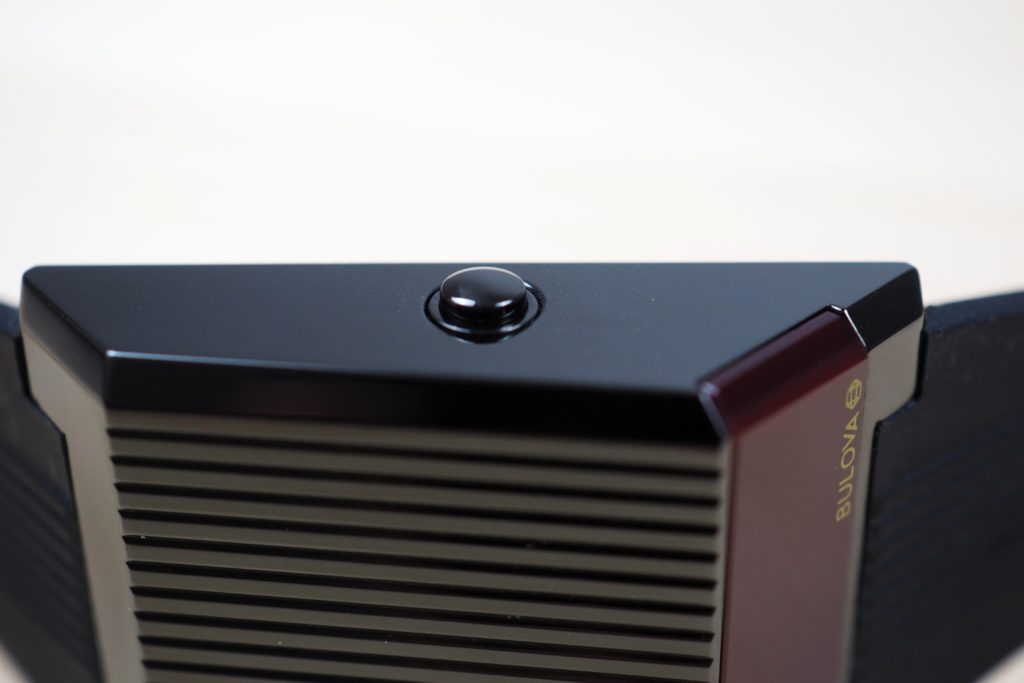
One feature I did like was the coin slot on the back of the case. This allows you to use a penny to open the battery cover, and change the battery yourself. Considering the fact that most watches require a jeweler’s tools to change the battery, this can be a significant time saver for your time-keeper.
Extras
The watch band has a slick, classic design that exactly matches the watch face. The grooved center links and smooth, staggered outer links line up exactly with the grooved and smooth portions on the face of the watch itself. The watch also includes a 3-year warranty, which is one of the better warranties in the business.
The Inspiration
To truly appreciate the Computron 1976 Re-Edition’s appeal, you have to understand the appeal of the original. Just as the 1965 Shelby GT defined, for many, the ideal version of a muscle car, in a similar fashion, the original Computron 1976 was one of the most iconic watches of its era. It embodies American 1970s technological achievement, with a boxy design that combines the slope of a DMC DeLorean’s roof and the art deco grooves along the center.
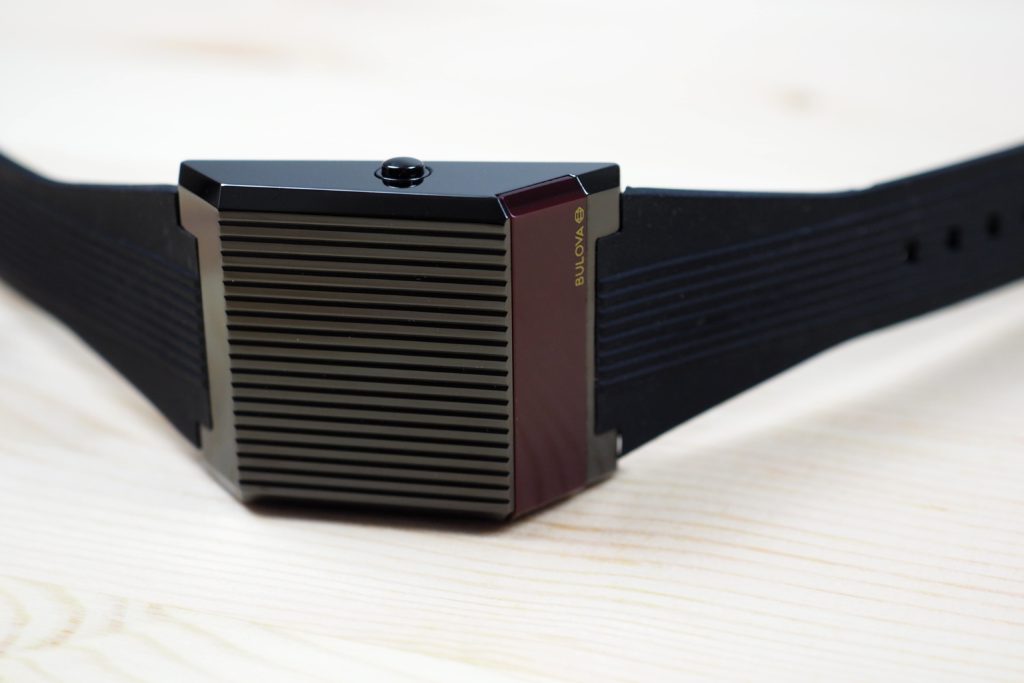
It’s easy to see why the original watch was so popular in the age of Star Wars and Logan’s Run. And in an age when science fiction is once again capturing the public imagination, it’s no surprise that Bulova would look to that era for inspiration. This 1976 re-release is both well-engineered and very well-timed.
To view Bulova’s entire line of watches you can visit their official website here.
What do you mean the crystal will only last for 24 months. I’ve got 3/5 quartz sitting in my draw that are at least 10 years old. Also if you look on ebay the original will pop up for sale still working that are around 40 years old.
To avoid any let down in expectations I’ve stated the minimum timeframe for a quartz crystal’s life. Sure there are definitely some that will last many years, but that’s not guaranteed.
Horrible take. Most modern quartz watches can achieve 3+ years of stated battery life (the ones that don’t have a need to light a display anyway). A run of the mill cheap quartz watch can be expected to work for at least 15 years barring some actual damage due to use. My seiko has been running for 40 years, which is ~409 trillion cycles of the crystal and was gaining 230 seconds per year, and I should be able to regulate that down into spec with the trimmer condenser. Absolutely no one ought to believe that quartz movements cannot last at least 10 years of use
Hi Tim, as I mentioned above I was stating the minimum, while I do agree most will outlast that by a long shot as you’ve stated. You may have great experiences with quartz longevity, but there are some people who have experienced early retirements of their quartz watches.
Quartz crystals cannot be ‘drained’. They are not dilithium. Countless billions of quartz crystal oscillators are used not only in watches but in the integrated circuitry central to the operation of every modern computer. The quartz crystals in our watches should easily outlast all of us. I have quartz watches that are going on for fifty years old and which are still keeping near perfect time. And these are not outliers. If a quartz crystal oscillator was to fail after two years, then the global electronics industry simply wouldn’t use them. In fact, outside of microelectronics, quartz crystals have been used in larger timekeeping devices since the 1930s. It was partly due to their incredible reliability, longevity and consistency that Swiss, American and Japanese watch manufacturers entered the race in the 1960s to miniaturise the technology and fit it into a wrist watch.
I agree. I have a couple of quartz watches that I bought in college in the 70’s and they still work as when new. A friend has one of the rare Rolex quartz models, same thing. I own around 100 watches, most vintage, but I’m really turned off by watch snobbery.
Great tutorial.
Thanks